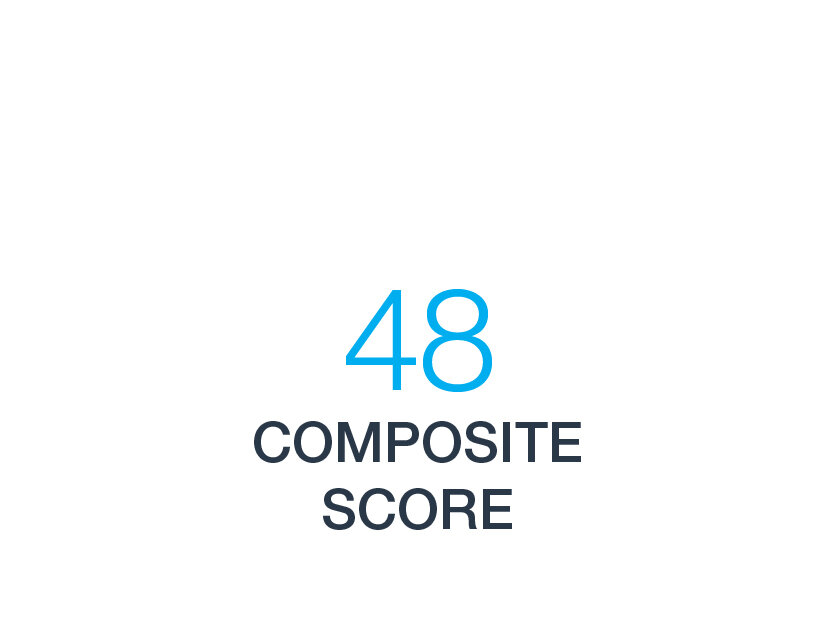
United States
Dashboard Indicators
-

Long-term Control of Eczema Symptoms
Scores are based on responses to the AD Control Tool: https://www.adcontroltool.com/adct-how-to-use/adct-in-clinical-practice
Data source: GPIIEC global survey of 3,253 patients and caregivers, 2022.
-

Satisfaction with Eczema Treatments
Self reported satisfaction with current treatments (caregivers and adults).
Data source: GPIIEC global survey of 3,253 patients and caregivers, 2022.
-

Life Span Trade-Off (Health Utility)
Percent of remaining life span adult patients would trade off in order to be restored to perfect health. (Derived from EQ5D Utility Scores)
Data source: GPIIEC global survey of 3,253 patients and caregivers, 2022.
-

Eczema Patients Self Reported Health to Compared to Country Average
Self-rated quality of life score for the average person compared to the self-rated quality of life score for adults with eczema.
Data source: GPIIEC global survey of 3,253 patients and caregivers, 2022.
-

Dimensions of Health – Relative Impact (Adults)
Data source: GPIIEC global survey of 3,253 patients and caregivers, 2022.
-

Financial Burden – Impacts
Percent of respondents (adults and caregivers) who reported using savings, borrowing money and/or reducing spending due to eczema. Higher = More Financial Impact
Data source: GPIIEC global survey of 3,253 patients and caregivers, 2022.
-

Shared Decision Making
The percentage of respondents who indicated that the healthcare provider whom they see for eczema asked about their priorities for their eczema care at the most recent visit.
Data source: GPIIEC global survey of 3,253 patients and caregivers, 2022.
-

Eczema Education and Training
Respondents who said a health care provider had ever suggested they attend an eczema training program that happens after the office visit.
Data source: GPIIEC global survey of 3,253 patients and caregivers, 2022.
-

Access to Dermatologists
The United States ranks 6th out of 10 countries in access to dermatologists.
Source: “ABMS Board Certification Report 2019-2020.” American Board of Medical Specialties , 2019, https://www.abms.org/wp-content/uploads/2020/11/ABMS-Board-Certification-Report-2019-2020.pdf.
-

Evidence-Based Guidelines
The AAD guideline met all criteria for a high-quality guideline. However, future guideline development efforts should include more robust patient and caregiver input, particularly input from people who live with eczema.
Scoring criteria for the guideline measure >
Source: Eichenfield, Lawrence F., et al. “Guidelines of Care for the Management of Atopic Dermatitis.” Journal of the American Academy of Dermatology, vol. 70, no. 2, Elsevier BV, Feb. 2014, pp. 338–351. Crossref, doi:10.1016/j.jaad.2013.10.010
Literature Review Key Findings
The factors associated with a higher odds of AD diagnosis, disease severity, burden, and comorbidities are now so well described that the US appears to set a global standard in this regard. However, few studies have developed and tested patient-centered interventions (e.g., nurse-led education programs) that might alleviate the physical, psychosocial, and financial burdens of AD. Such studies exist in many of the other countires in this report, and US-specific studies should be conducted in light of important differences between the US and western European countries (namely, the diversity of the patient population and cost of healthcare).
An AD diagnosis confers a much greater financial burden on US patients than on patients in the other countries of interest. It is worth repeating that 42.6% of patients with moderate-to-severe disease paid $1000 or more in annual out of pocket expenses, and 8.5% paid $5000 or more. After considering indirect expenses such as work absenteeism, one study found that the families of children with moderate-to-severe AD spent 34.8% of their monthly budget on expenses related to their child’s AD. Unsurprisingly, the personal financial burden is one of the main determinants of family impact. Especially in light of the cost of US healthcare and treatment, studies that explore how to reduce costs through better management and flare prevention could be particularly useful.
The physical and psychosocial consequences of AD are well characterized among US adults but not well studied in the pediatric population and only moderately well understood in caregivers. The existing evidence regarding caregivers’ financial and sleep burdens suggest that pediatric dermatology clinical trials should include caregiver burden metrics as secondary endpoints.
Finally, as in other countries, the current dissatisfaction of US patients and caregivers with both the available treatments and medical care lead to decreased adherence, and sometimes an increase in (costly) healthcare utilization.
Learn more about the findings gathered from the United States literature review.
